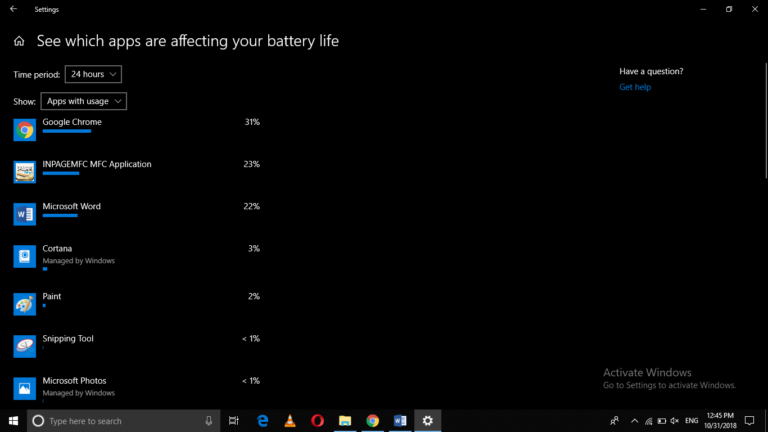

The main group will remain on for as long as the UPC battery has power. The UPS was configured to turn off the secondary group if there is a power outage but after a 15 second delay this will help with short transient outages. The secondary power group can have non-essential devices attached, in my case the powered studio monitor speakers.

#Battery status windows 10 Pc#
For example the main group can have the PC and one of the monitors connected. The rear of the unit consists of a number of sockets, for the outputs there are 2 distinct groups that can be configured differently. Once I understood the approximate power requirements, I selected the Smart-UPS 1000VA LCD 230V from APC. If I had more complex energy requirements I would have first purchased a power meter to measure how much power my devices were using before choosing the UPS. My main requirement was the ability to save work and safely shut down the PC before losing all power. Having researched typical power consumptions and armed with the knowledge that my PC uses SSDs, is fan-less, and does not have a high-powered GPU something in the 1000-1500 VA range was required. When choosing a UPS, generally speaking, the more expensive they are the longer they can provide power to connected devices (or provide the same or more power for a longer time). A UPS is like a big battery that gets charged from main power, but when there is an outage the battery kicks in and provides power to connected devices. This is where an external uninterruptable power supply (UPS ) comes in handy. My main PC is a silent desktop which means (unlike a laptop) has no resilience to power outages. In the last year there have been several power outages ranging from several hours to transient outages of a few seconds. The power grid at my home office is sometimes unreliable.


 0 kommentar(er)
0 kommentar(er)
